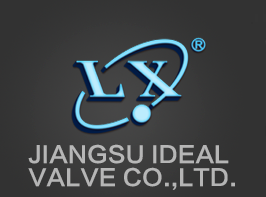Valve electric actuator 6 principles of selection!
Usually, the correct choice of valve electric actuator is as follows:
1. Operating Torque: Operating Torque is the most important parameter to select the valve electric device. The output torque of the electric actuator should be 1.2-1.5 times of the maximum operating torque of the valve.
2. There are two kinds of main engine structure for operating thrust valve electric device: one is not equipped with thrust disc to output torque directly; the other is equipped with thrust disc, and the output torque is converted to output thrust through the stem nut in the thrust disc.
3. Number of rotating turns of output shaft: The number of rotating turns of output shaft of valve electric device is related to the nominal diameter of valve, the pitch of valve stem and the number of threaded head. It should be calculated according to M=H/ZS (M is the total number of rotating turns to be satisfied by electric device, H is the opening height of valve, S is the pitch of valve stem drive thread, Z is the number of valve stem threaded head).
4. Stem diameter to multi-turn open stem valve, if the maximum stem diameter allowed by the electric device can not pass through the valve stem, it can not be assembled into an electric valve. Therefore, the inner diameter of the hollow output shaft of the electric device must be larger than the outside diameter of the stem of the valve. For partial rotary valves and hidden-rod valves in multi-rotary valves, although the problem of passing through the stem diameter is not considered, the stem diameter and the key groove size should also be fully considered in the selection, so that the assembly can work properly.
5. output speed: if the valve's opening and closing speed is too fast, it will cause water hammer. Therefore, appropriate opening and closing speed should be selected according to different operating conditions.
6. valve electric actuator has its special requirement that it must be able to limit torque or axial force. Usually, valve actuators adopt a torque limiting coupling. When the specifications of the electric device are fixed, the control torque is determined. Normally running in a predetermined time, the motor will not be overloaded.
However, the following situations may lead to overload:
First, the power supply voltage is low, and the torque needed is not obtained, so that the motor stops rotating.
Secondly, the torque limiting mechanism is misadjusted to make it larger than the stop torque, resulting in continuous excessive torque, so that the motor stops rotating.
The three is intermittent use, resulting in heat storage, exceeding the allowable temperature appreciation of the motor.
Four, because of some reason, the torque limiting mechanism circuit fails, causing the torque to be too large.
Five is to use the environment temperature too high, relative to the motor heat capacity drop.
In the past, fuses, over-current relays, thermal relays, thermostats and so on were used to protect motors, but each method had its advantages and disadvantages. Absolutely no reliable protection measures are available for electric installations. Therefore, it is necessary to adopt a variety of combinations, summed up in two ways: one is to judge the increase or decrease of the input current of the motor; the other is to judge the excitation of the motor itself. These two ways, regardless of the type, must consider the time allowance given by the motor thermal capacity.
Generally, the basic protection methods for overload are:
1. overload protection for continuous operation or point operation of motor, using thermostat;
2. to protect the motor from blocking, thermal relay is adopted.
3. for short circuit accidents, fuse or overcurrent relay are used.
 TEL:+86-515-87214888
TEL:+86-515-87214888  EMAIL:fnjslxfy@163.com
EMAIL:fnjslxfy@163.com 






